A rapidly expanding entrepreneurial ecosystem is helping cement Tampa Bay’s status as a burgeoning technology hub; however, navigating the myriad available resources can prove daunting to startup founders.
St. Petersburg Innovation District officials have created a solution with a Duke Energy grant and assistance from several support organizations. Alison Barlow, the District’s executive director, unveiled the Tampa Bay Innovation Ecosystem Map at the Jan. 23 State of Science event.
The single-sheet, two-sided map lists over 100 regional entrepreneurial resources. Barlow told the Catalyst that its color-coded guide helps organizations and the innovators they serve.
“I think sometimes, we all try to be everything to everybody,” said Barlow, who also oversees the Maritime and Defense Technology Hub. “You actually make so much more progress if you focus.”
She said Tampa Bay’s geography and entrepreneurial diversity can impede efforts to find specialized assistance. Barlow said she and other local leaders often attempt to steer founders in the right direction from memory.
In addition, Barlow said organizational leaders who lack relevant expertise sometimes decline to help entrepreneurs without explanation. She noted the frustration that can cause and said the startup community has long sought a formal guide highlighting the entire ecosystem.
The Innovation District received a grant from Duke and worked on the map throughout the fall of 2023. Barlow said the goal was creating a free, cohesive and shareable resource.
“Something that I could have in front of me at a coffee shop,” she added. “A piece of paper where I could circle and point to things. It will hopefully propel some of those online websites to expand what they’re covering or update what they’re doing.”

The map also includes a color-coded guide to direct entrepreneurs to specific services. Image: St. Petersburg Innovation District.
The map’s color-coded key separates organizations according to their niche while allowing flexibility. That helps female, minority and veteran-founded startups find specialized assistance.
Barlow said some participants were reluctant to say they focus on a specific demographic or industry. However, she believes the ecosystem should celebrate experts in their respective fields.
“I wish we had more color coding,” Barlow added. “I wish we had more organizations that were really doubling down on different niches. Because once we have that, we can look for different gaps.”
Local organizations include the ARK Innovation Center/Tampa Bay Innovation Center; CodeBoxx; St. Petersburg College & Workforce Development; the St. Petersburg Area Economic Development Corp.; Thrive DTSP; Venture Catalyst; and Women in Tech & Entrepreneurship.
The guide also lists organizations according to a startup’s stages. Those include ideation, planning, execution, scaling and hypergrowth.
At the State of Science, Ben Friedman, an economic development specialist with Duke, said his department looks to fund projects that move the entrepreneurial needle. He said his immediate reaction to Barlow’s idea was, “This is great, I love it. I want to give you money.”
“This is something that we’re so proud of because it’s hard enough being an entrepreneur to begin with,” Friedman added. “They’re already working on very cool, cutting-edge technology, and, frankly, the entire ecosystem is so fragmented.”
He pledged to encourage Duke’s various business partners in other cities to be “very heavily inspired by the work that was done.” Barlow called local participation “fantastic” Tuesday morning.
She noted that nearly all 102 listed organizations responded within days. Balow also stressed that the map is a “snapshot in time” that undoubtedly missed some available resources.
She believes the Innovation District laid a foundation for other groups to build on the initiative. Barlow now seeks a regional partner with a holistic perspective to continue the work.
Barlow said she is already exploring additional funding to sustain the program. She expects to establish a plan for the Innovation Ecosystem Map’s future in the next month or two.
“What this will do is help – first and foremost – everybody just reconfirm that Tampa Bay is already a tech hub with a ton of resources and capabilities,” Barlow said. “For the entrepreneurs, they get confidence that there’s people out there to help them. They just have to find the right group.”
To view, download and print the map, visit the website here.
The post New guide helps innovators navigate local resources first appeared on St Pete Catalyst.
The post New guide helps innovators navigate local resources appeared first on St Pete Catalyst.
